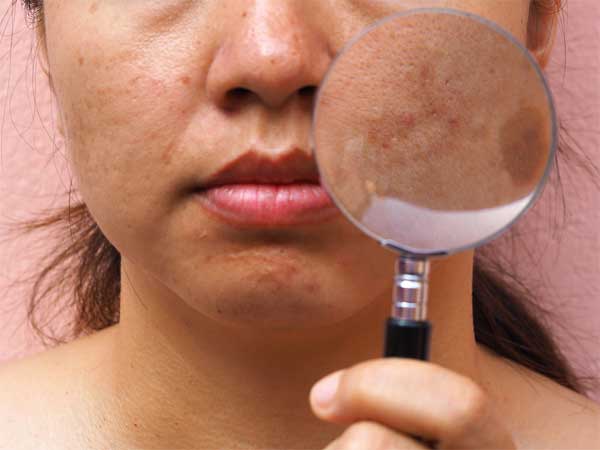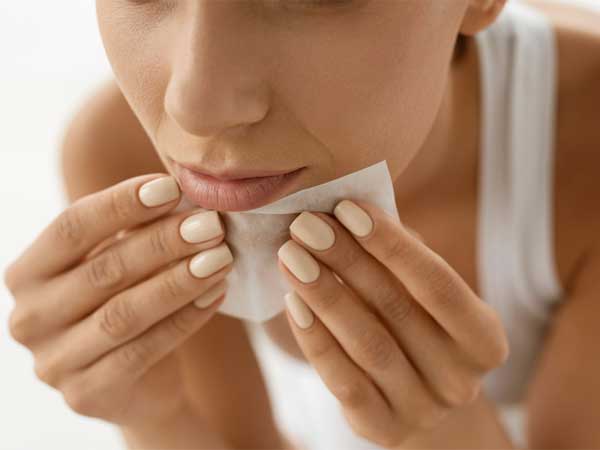Just In
- 1 hr ago

- 2 hrs ago

- 3 hrs ago

- 10 hrs ago

Don't Miss
- Finance
 Intraday Trade Call: Day Trading Stock Picks By Chandan Taparia Of Motilal Oswal On Thurday, 25 April
Intraday Trade Call: Day Trading Stock Picks By Chandan Taparia Of Motilal Oswal On Thurday, 25 April - Automobiles
 New Features Of The Ultraviolette F77 Mach 2: Uniting Performance, Safety, And Technology
New Features Of The Ultraviolette F77 Mach 2: Uniting Performance, Safety, And Technology - Sports
 IPL 2024: Why did Rishabh Pant Apologize to Cameraperson after GT victory?
IPL 2024: Why did Rishabh Pant Apologize to Cameraperson after GT victory? - Movies
 Aadujeevitham Box Office Collection Day 29 Prediction: Strong Overall Performance Amidst Recent Decline
Aadujeevitham Box Office Collection Day 29 Prediction: Strong Overall Performance Amidst Recent Decline - News
 Sonia Gandhi Shed Tears For Terrorists Killed In Batla Encounter: BJP Chief Nadda
Sonia Gandhi Shed Tears For Terrorists Killed In Batla Encounter: BJP Chief Nadda - Education
 JEE Main Result 2024 Out, Telangana's 15 Toppers Shine, Check Statewise List of 56 Candidates with Perfect 100
JEE Main Result 2024 Out, Telangana's 15 Toppers Shine, Check Statewise List of 56 Candidates with Perfect 100 - Travel
 Escape to Kalimpong, Gangtok, and Darjeeling with IRCTC's Tour Package; Check Itinerary
Escape to Kalimpong, Gangtok, and Darjeeling with IRCTC's Tour Package; Check Itinerary - Technology
 OPPO Find X7 Ultra Camera Deep-Dive: Pushing the Boundaries of Photography on a Smartphone
OPPO Find X7 Ultra Camera Deep-Dive: Pushing the Boundaries of Photography on a Smartphone
3 Ways to Know Your Skin Type At Home, Now!
Conduct these easy tests at home to know your skin type and use makeup products likewise.
The wish to apply so many kinds of lotions, creams, powder or makeup on the skin is very natural. However, before applying all kinds of makeup and associated beauty products on the body, one important step that everyone misses is to test their skin type.
The immediate result is, the beauty product reacts with the skin and you need medical help ASAP. In many cases, the skin might not react immediately, but the outcome becomes pathetic by the time it is noticed.
So, how to ensure that you are on the right track when it comes to your makeup and beauty products?

Well, in order to make the right choice over the ample beauty products and treatments available, it is important to know what your skin type is.
Human skin - the largest organ of our body - has different types and once you know your skin type - it becomes too easy to pick your makeup or beauty products.
When categorized, the common four skin types that are found are the following:
Oily
Skin
When
your
skin
has
an
extra
coat
of
oil
by
the
midday
on
a
daily
basis,
then
you
fall
under
the
bracket
of
having
oily
skin.
Oily
skin
people
get
more
skin
breakouts
like
pimples
and
acne.
When
any
oily
skin
person
wipes
their
face
with
a
tissue,
a
layer
of
oil
is
visible.
Hereditary
in
nature,
the
cons
of
oily
skin
include
blackheads,
whiteheads
and
enlarged
pores.

Dry
Skin
Exactly
opposite
to
oily
skin,
for
dry
skin
people,
a
matte
look
is
constant
from
day
to
night.
Very
dehydrated
to
look
at,
dry
skin
offers
constant
problems
like
itchy
skin,
red
skin,
flaky
skin
and
more.
Even
after
cleansing,
dry
skin
appears
very
dehydrated
to
look
at.
Normal
Skin
Congratulations
in
case
you
find
out
you
have
normal
skin,
because
this
is
a
god's
gift
indeed.
Normal
skin
is
always
smooth
and
silky
with
rarely
any
skin
breakouts.
Very
constant
all
day
long,
the
beauty
tips
required
for
a
normal
skin
type
is
very
minimal.
Combination
Skin
It
might
be
that
you
neither
have
an
oily,
dry
or
normal
skin.
In
that
case,
you
will
be
called
a
combination
skin
holder,
where
some
parts
of
the
body
are
very
dry,
some
very
oily
and
the
rest,
normal.
In
case
you
have
only
two
of
the
skin
types,
then
again
you
will
be
called
a
combination
skin
beholder.
Sensitive
Skin
Very
delicate
in
nature
and
toughest
to
take
care
of,
sensitive
skin
reacts
at
any
point.
A
weather
change
or
an
experiment
in
makeup
can
lead
to
a
wink
of
eye
changes
in
the
sensitive
skin.
Now, when you know what are the different kinds of skin types that are common, it is important to discover yours, so that you are at the right beauty regimen track.
Skin type can be learnt at home by conducting simple skin type tests and observing the same for over a period of time. If your skin type changes due to the weather, then do not panic, as this is a very natural skin behaviour confirmed by dermatologists.

Feel
Your
Skin
One
of
the
ways
to
know
your
skin
type
is
by
observing
and
feeling
it
for
a
considerable
long
period
of
time.
Wash
your
face
in
the
morning
and
do
not
apply
any
skin
or
makeup
product
until
mid-day.
Exactly
at
mid-day,
try
checking
your
skin.
Observations
- If it is flaky - you own dry skin.
- If it is oily and moistened - you have oily skin.
- In case your T-zone is oily and the rest of the face is dry - then it is combination skin.
- If your skin starts reacting with red patches - then you have sensitive skin.
- However, you have to keep doing this observation for 15-20 days in the same climatic condition to get the right result.

Notice
Your
Pores
All
humans
have
pores
in
their
bodies.
The
size,
shape,
and
nature
of
the
pores
can
let
you
know
what
your
skin
type
is.
Observations
- If you have small and tight pores and it never bothers you - then you have dry skin.
- In case you have big pores with constant skin problems like pimples and acne - then you have oily skin.
- If you cannot find any pores on your body, then you have normal skin.
- If touching or little scratching on your pores turns them red in colour and reacts - then you belong to the sensitive skin category.

Blotting
Paper
Test
For
Skin
Type
One
of
the
old
school
methods
to
know
your
skin
type
at
home
is
by
using
the
blotting
paper
method.
The
only
requisite
in
this
skin
type
test
at
home
is
blotting
paper.
However, the blotting paper test for skin type is an overnight process, but the result you get is assured.
A night before the blotting paper test, just wash your face and go off to sleep. No cleansing, moisturizing or toning of the skin is required that night.
Next day, leave your bed, take the blotting paper and stand in front of the mirror. Start dabbing the blotting paper all over your face.
Observations:
- If there is too much oil on the paper - the result is oily skin.
- If there is no oil on the blotting paper and you feel your skin is dehydrated or extremely tight - the conclusion is dry skin.
- A very confusing result but not to worry about is, your cheeks are fine but your nose is giving out too much oil on the blotting paper. Well, you own combination skin.
- If there is hardly any change in the blotting paper and you continue to feel as good as any other time - then congrats, you own normal skin.
- Lastly, if your skin did not react on the blotting paper but is prone to rashes and allergies - then take a doc's advice, you might have sensitive skin.
-
 beauty7 Simple Skincare Hacks Tailored For The Busy You To Get Effortless Radiance
beauty7 Simple Skincare Hacks Tailored For The Busy You To Get Effortless Radiance -
 beauty6 Korean Beauty Tricks To Add To Your Skincare For The Ultimate Glass Skin
beauty6 Korean Beauty Tricks To Add To Your Skincare For The Ultimate Glass Skin -
 healthWhat Are Demodex Mites? These 8-Legged Creatures Live Under Skin And May Give You Creepy Vibes
healthWhat Are Demodex Mites? These 8-Legged Creatures Live Under Skin And May Give You Creepy Vibes -
 healthWhy Can't We Resist Popping Pimples? Let's Find Out Why We Derive So Much Pleasure From Them!
healthWhy Can't We Resist Popping Pimples? Let's Find Out Why We Derive So Much Pleasure From Them! -
 beautyDo This Skin Toning Trick Everyday To Get Rid Of Double Chin
beautyDo This Skin Toning Trick Everyday To Get Rid Of Double Chin -
 beautyWet Towel Face Wiping For Acne: A Simple And Affordable Solution For Glowing Skin
beautyWet Towel Face Wiping For Acne: A Simple And Affordable Solution For Glowing Skin -
 beauty3 Simple Home Remedies For Peeling Skin Around Nails That Are Magic!
beauty3 Simple Home Remedies For Peeling Skin Around Nails That Are Magic! -
 healthUnveil the Amazing Health Perks of Eating Mangoes!
healthUnveil the Amazing Health Perks of Eating Mangoes! -
 healthWhat Are The Best Foods To Include In My Diet For Healthy, Glowing Skin?
healthWhat Are The Best Foods To Include In My Diet For Healthy, Glowing Skin? -
 beautyNon-Alcoholic Wine: Your Key To Age-Defying Skin
beautyNon-Alcoholic Wine: Your Key To Age-Defying Skin -
 beautyReduce Cellulite With Ease: Home Remedies You Need To Try Today
beautyReduce Cellulite With Ease: Home Remedies You Need To Try Today -
 healthCan 'Vitamin C Flush' Cleanse Reverse Ageing?
healthCan 'Vitamin C Flush' Cleanse Reverse Ageing?


 Click it and Unblock the Notifications
Click it and Unblock the Notifications



